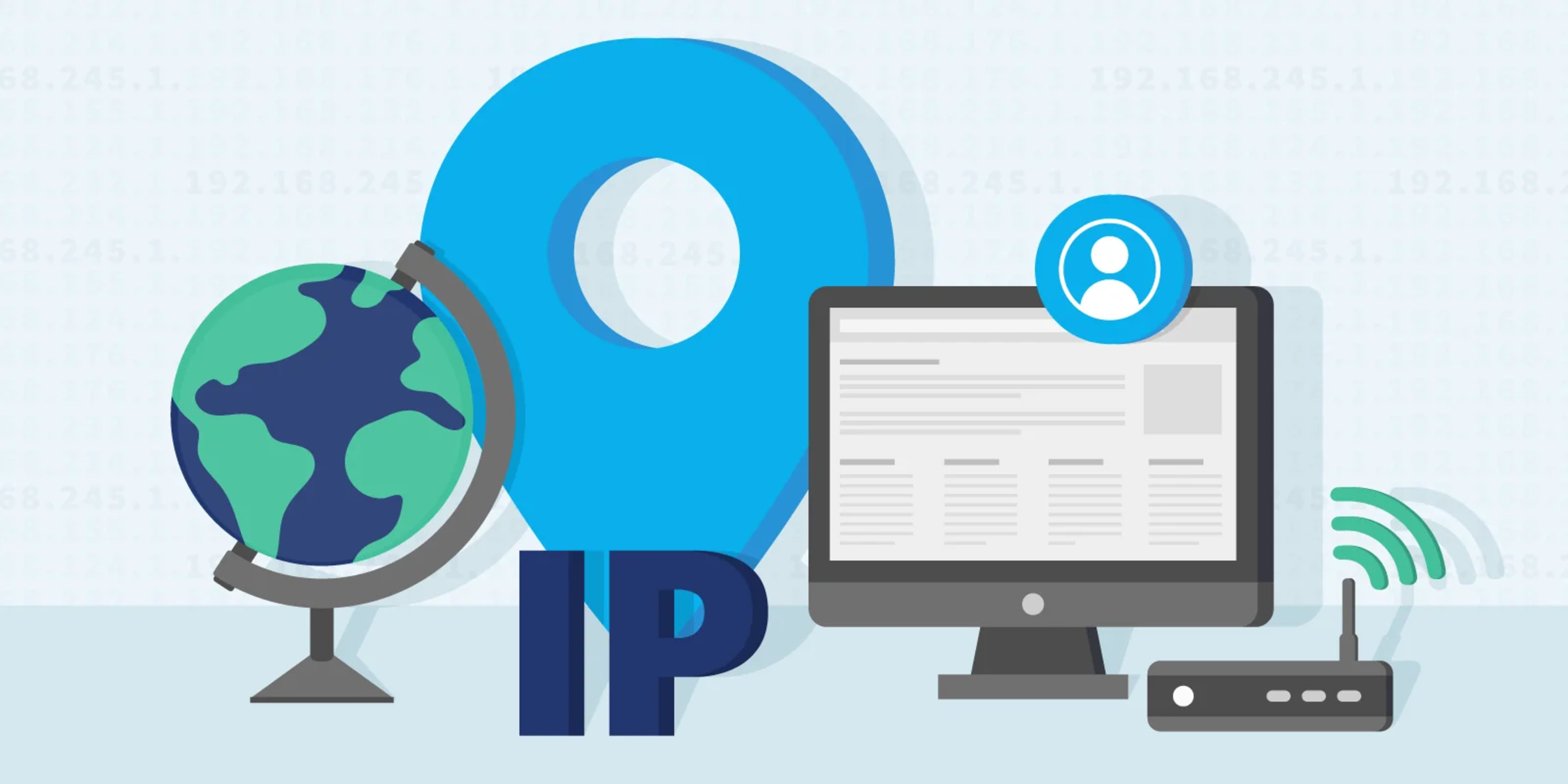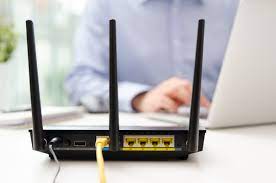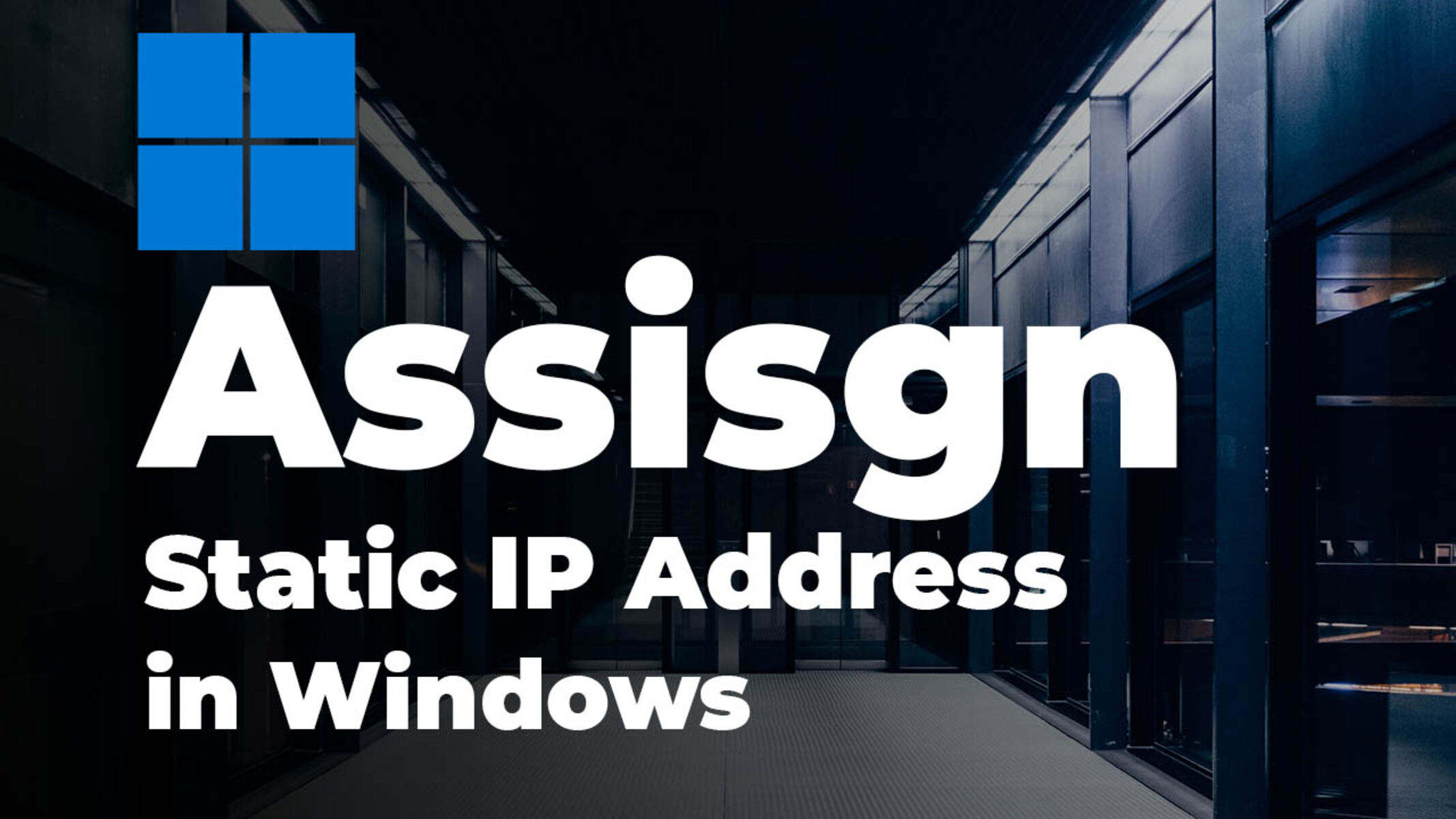Introduction
When it comes to internet connectivity, most users are familiar with dynamic IP addresses, which are automatically assigned to devices by Internet Service Providers (ISPs) each time they connect to the internet. However, there are instances where you may need a static IP address. In this article, we will explore what a static IP address is, why you might need one, and the various methods you can use to obtain a static IP address.
A static IP address is a unique numerical label assigned to a device or network by an ISP. Unlike dynamic IP addresses that change each time a device connects to the internet, a static IP address remains constant. It provides a fixed address that can be used to access devices or services remotely.
So why would you need a static IP address? There are several reasons. Firstly, if you are hosting a website or running a server that needs to be accessible to users at all times, a static IP address ensures that your website or server remains consistently reachable. Additionally, if you utilize remote desktop or file sharing services, a static IP address makes it easier for others to connect to your device or network securely.
Now that you understand the importance of a static IP address, let”s explore the different methods you can use to obtain one.
What is a Static IP Address?
A static IP address is a unique numerical label assigned to a device or network that remains constant. Unlike dynamic IP addresses, which are automatically assigned by ISPs and change each time a device connects to the internet, a static IP address provides a fixed address that does not change.
Think of a static IP address as a virtual “home address” for your device or network. It allows you to have a consistent online identity that can be accessed by other devices or services. Just like a physical address helps people find your home, a static IP address enables devices from across the internet to locate and connect with your device or network.
With a static IP address, you can host services and websites that need to be accessible to users at all times. For example, if you’re running a web server, a static IP address ensures that the server’s resources are consistently reachable by users. It allows you to establish a stable connection for services like remote desktop access, file sharing, or virtual private networks (VPNs).
Compared to dynamic IP addresses, static IP addresses offer several advantages. For one, they provide more stability and reliability. Since the IP address doesn’t change, there are no interruptions in connectivity due to IP address reassignment. This is particularly important for businesses and organizations that require a constant online presence.
Additionally, static IP addresses simplify the process of mapping domain names to IP addresses. Domain names, like example.com, serve as human-friendly references, while IP addresses are used by computers to locate websites. With a static IP address, you can easily associate your domain name with your device or network and create a seamless connection between your website and the world.
Now that you have an understanding of what a static IP address is, let’s delve into the reasons why you might need one.
Why would you need a Static IP Address?
There are several compelling reasons why you might need a static IP address for your device or network. Let’s explore some of the common scenarios where a static IP address proves advantageous:
1. Hosting Services: If you run a website, game server, or any other online service that needs to be accessible to users at all times, a static IP address is essential. With a static IP, users can reliably connect to your services without the need to constantly update IP addresses.
2. Remote Access: If you frequently access your device or network remotely, a static IP address simplifies the process. Whether it’s remote desktop access or file sharing, a static IP ensures that you can easily connect to your device from anywhere without the hassle of tracking changing IP addresses.
3. Security: Static IP addresses can enhance security measures. For example, if you operate security cameras or surveillance systems, a static IP allows you to connect to your cameras reliably and monitor your premises securely. Similarly, if you need to set up a Virtual Private Network (VPN) to ensure secure remote access to your network, a static IP address is essential for establishing a stable and secure connection.
4. Reliable Online Gaming: Online gaming often requires a consistent and stable connection. By using a static IP address, you can avoid potential disruptions or lag caused by dynamic IP address changes. This ensures a smoother gaming experience and minimizes the risk of disconnections.
5. Convenience for Hosting Email or DNS Servers: If you’re hosting email or DNS servers, having a static IP address makes it easier for other mail servers or DNS resolvers to locate and communicate with your server. It simplifies the setup process and minimizes the likelihood of email delivery issues or DNS resolution errors.
These are just a few examples of why you might need a static IP address. Whether it’s for hosting services, remote access, security, online gaming, or server operations, a static IP address offers stability, convenience, and reliable connectivity.
Now that you understand the benefits of having a static IP address, let’s explore different methods to obtain one.
Different ways to get a Static IP Address
There are several methods you can use to obtain a static IP address for your device or network. Let’s explore the different options:
- Contact your Internet Service Provider (ISP): The most straightforward approach is to contact your ISP and inquire about obtaining a static IP address. Many ISPs offer static IP address services for an additional fee. They can guide you through the process of setting up and configuring a static IP address for your connection.
- Configure a Static IP Address through your router: If you have a router that supports static IP address configuration, you can set up a static IP address directly through your router’s interface. By assigning a specific IP address to your device within the router’s settings, you can ensure that the device always receives the same IP address whenever it connects to the network.
- Use a Virtual Private Network (VPN): Another way to obtain a static IP address is by using a VPN service that provides dedicated IP addresses. Many VPN providers offer the option to purchase a static IP address addon. When you connect to the VPN, you’ll be assigned a specific static IP address that remains constant for your online activities.
- Dynamic DNS Services: Dynamic DNS (DDNS) services can also be utilized to achieve a similar result to a static IP address. DDNS services allow you to associate a domain name with a dynamic IP address. Special software or hardware on your network keeps the DDNS service updated with your changing IP address. This way, you can access your device or network using a domain name, even if the IP address changes.
Each method has its own advantages and considerations. Contacting your ISP is generally the simplest approach, but it may come at an additional cost. Configuring a static IP address through your router offers more control, but it requires a router that supports static IP assignment. Using a VPN with a dedicated IP address provides flexibility and privacy benefits. Lastly, dynamic DNS services offer a workaround to achieve a similar outcome without an official static IP address.
Consider your specific needs and technical capabilities when choosing the most suitable method to obtain a static IP address. Now that we have explored different ways to obtain a static IP address, let’s examine the pros and cons of using a static IP address.
Option 1: Contact your Internet Service Provider (ISP)
The easiest and most straightforward way to obtain a static IP address is by contacting your Internet Service Provider (ISP). Most ISPs offer static IP address services for an additional fee. By reaching out to your ISP, you can inquire about the availability and pricing of static IP addresses.
Here’s how the process typically works:
- Contact your ISP: Call or email your ISP’s customer support and express your interest in acquiring a static IP address. They will provide you with the necessary information about their static IP services, including the cost and any additional requirements.
- Complete the paperwork: Your ISP may require you to fill out certain paperwork or sign an agreement to proceed with the static IP address request. This is a standard procedure to ensure that you understand the terms and conditions associated with obtaining a static IP address.
- Configuration and setup: Once the request is approved, your ISP will guide you through the process of configuring and setting up the static IP address. This may involve configuring your modem or router settings or making changes to your network setup. Your ISP’s technical support team will provide you with the necessary instructions and support to ensure a smooth setup process.
One of the main advantages of obtaining a static IP address through your ISP is the reliability and support that comes with it. Since the static IP address is provided directly by your ISP, you can rely on their technical assistance if any issues arise. Additionally, having a static IP address directly from your ISP ensures that it is properly registered and recognized across the internet.
However, it’s important to note that acquiring a static IP address through your ISP usually involves an additional monthly or annual fee. The cost may vary depending on your location, ISP, and the specific service package you choose. Be sure to inquire about the pricing details and any contract terms associated with the static IP address service.
Contacting your ISP and obtaining a static IP address is a convenient option for users who prefer a hassle-free setup and reliable support. However, if you prefer more control over your network configuration or want to explore alternative methods, there are other options available. Let’s explore another method: configuring a static IP address through your router.
Option 2: Configure a Static IP Address through your router
If you have a router that supports static IP address configuration, another option to obtain a static IP address is by configuring it through your router’s settings. This method allows you to set up a static IP address directly on your local network, without involving your Internet Service Provider (ISP).
Here’s how you can configure a static IP address through your router:
- Access your router’s administration interface: Open your web browser and enter your router’s IP address in the address bar. This IP address can typically be found in the user manual or on the back of the router. Alternatively, you can try common default router IP addresses such as 192.168.1.1 or 192.168.0.1.
- Log in to your router: Enter the router’s username and password to access the administrative interface. If you haven’t changed these credentials before, it may be the default login information provided by the manufacturer. Consult your router’s documentation for the correct credentials.
- Locate the DHCP settings: Once logged in, navigate to the DHCP settings section in the router’s configuration interface. Look for options related to IP address assignment or DHCP server settings.
- Configure the static IP address: Within the DHCP settings, find the area for static IP assignment. Specify the desired IP address that you want to assign to your device. Ensure that the IP address is within the correct IP range and is not already in use by another device on your network.
- Save and apply changes: After configuring the static IP address, save the settings and apply the changes. Your router will then assign the specified IP address to your device whenever it connects to the network.
A major advantage of configuring a static IP address through your router is the control it provides over your local network. This method allows you to manage IP address assignments within your network environment, ensuring consistent connections for your devices.
However, it’s important to note that not all routers support static IP address configuration, especially those provided by your ISP. Check your router’s specifications or consult the manufacturer’s documentation to confirm if this functionality is available. Additionally, configuring a static IP address through your router requires some technical knowledge and familiarity with router administration interfaces.
Configuring a static IP address through your router offers flexibility and control over your network’s IP assignment process. However, if this option is not feasible for you, there is an alternative method to consider: using a Virtual Private Network (VPN) to obtain a static IP address.
Option 3: Use a Virtual Private Network (VPN)
If you’re looking for an alternative way to obtain a static IP address, using a Virtual Private Network (VPN) can be an effective solution. Many VPN providers offer dedicated IP address services that provide you with a static IP address for your online activities.
Here’s how you can use a VPN to obtain a static IP address:
- Select a VPN provider: Look for a VPN provider that offers dedicated or static IP address options. Make sure to choose a reputable provider with servers in locations that suit your needs.
- Subscribe to the VPN service: Sign up for a subscription plan that includes a dedicated IP address. Be aware that VPN providers often charge an additional fee for this service, so consider your budget and requirements.
- Configure the VPN connection: Install the VPN client software provided by the VPN provider on your device. Follow the instructions to set up the VPN connection and connect to a server that offers a dedicated IP address.
- Enjoy your static IP address: Once connected to the VPN server, you will be assigned a dedicated IP address that remains constant for your online activities. This IP address can be used for hosting services, remote access, or any other purpose where a static IP is required.
Using a VPN to obtain a static IP address offers several advantages. Firstly, it provides a high level of privacy and security for your online activities, as your internet connection is encrypted and routed through the VPN server. Additionally, a VPN allows you to bypass regional restrictions and access geo-blocked content by connecting to servers in different locations.
However, it’s important to consider the potential drawbacks of using a VPN for a static IP address. The cost of a VPN subscription, including the dedicated IP address feature, can be higher compared to other methods. Furthermore, the performance of a VPN connection might be slightly slower compared to a direct connection, depending on the VPN provider and server locations.
Using a VPN with a dedicated IP address can be an excellent option for users who prioritize privacy, security, and flexibility. It allows you to obtain a static IP address without relying on your ISP or configuring your router. When considering this option, research different VPN providers, compare their offerings, and choose the one that best fits your needs.
Now that we’ve explored different methods to obtain a static IP address, let’s move on to discussing the pros and cons of using a static IP address.
Pros and Cons of using a Static IP Address
Using a static IP address offers certain advantages and disadvantages based on individual needs and requirements. Let’s explore the pros and cons of using a static IP address:
Pros:
1. Stability and Reliability: A static IP address provides a fixed address for your device or network, ensuring consistent connectivity. It eliminates the risk of losing connections due to dynamic IP address changes.
2. Remote Access and Hosting: With a static IP address, you can easily set up remote access to your device or network, making it convenient for activities such as remote desktop access, file sharing, and hosting services.
3. Convenience for Users: For users who require frequent or regular access to specific devices or services, a static IP address provides convenience, as there’s no need to remember changing IP addresses or configure systems for each connection.
4. Improved Security: A static IP address simplifies security measures, as specific IP addresses can be whitelisted or allowed access for secure communication, remote management, or online transactions.
5. Better Performance for Online Gaming: Online gamers can benefit from a static IP address, as it ensures a consistent and stable connection, reducing the risk of disconnections and lag during gameplay.
Cons:
1. Additional Cost: Acquiring a static IP address often involves paying an extra fee. This can vary depending on the ISP, service plan, or VPN provider, adding to the overall cost of the internet connection.
2. Complex Setup: Configuring a static IP address may require technical knowledge and expertise, especially when setting it up through router configuration or VPN services. Novice users might find the process challenging.
3. Limited Flexibility: Static IP addresses are tied to specific devices or networks. If you change locations or need to use a different device, you may need to reconfigure the IP settings or obtain a new static IP address.
4. Potential Security Risks: While a static IP address can enhance security measures, it can also be a potential target for hackers or malicious activities. Proper security measures, such as firewalls and regular system updates, should be implemented to mitigate such risks.
5. Dependence on ISP: If you choose the option of obtaining a static IP address through your ISP, you are reliant on their infrastructure and technical support. Any issues with the ISP’s network or service could impact the connectivity and availability of the static IP address.
Considering these pros and cons will help you decide whether obtaining a static IP address aligns with your specific needs and preferences. Evaluate the advantages and disadvantages in relation to your requirements to make an informed decision.
Conclusion
A static IP address can provide numerous benefits, such as stability, convenience, and improved accessibility for remote access and hosting services. Whether you choose to contact your ISP, configure a static IP through your router, or use a VPN, it’s important to assess your specific needs and technical capabilities.
Considerations for choosing a method:
1. Cost: Determine the additional cost involved in obtaining a static IP address through your ISP or VPN provider, and assess whether it aligns with your budget.
2. Technical expertise: Consider your level of technical knowledge and familiarity with router configuration or VPN setup. If you prefer a hassle-free approach, contacting your ISP might be the best option.
3. Flexibility: Evaluate the portability of the static IP address. If you frequently change locations or devices, a VPN or dynamic DNS service might offer more flexibility compared to a static IP provided by your ISP.
4. Security: Prioritize security measures when utilizing a static IP address. Implement firewalls, encryption, and regular system updates to mitigate potential risks.
5. Performance: Assess the performance implications of using a VPN, as it may introduce slight latency compared to a direct connection.
By carefully considering these factors, you can choose the most suitable method to acquire a static IP address that meets your specific requirements and preferences.
Remember, a static IP address is not always necessary for all users or situations. Evaluate your needs and determine if the advantages of having a static IP address outweigh the associated costs and potential complexities. If a static IP address is essential for your online activities, take the necessary steps to obtain and configure it properly to enjoy the benefits it offers.
Whether you’re hosting services, managing remote access, or seeking a consistent connection, utilizing a static IP address can provide the stability, convenience, and reliability you need. Take control of your online presence and enhance your network’s capabilities with a static IP address.

























